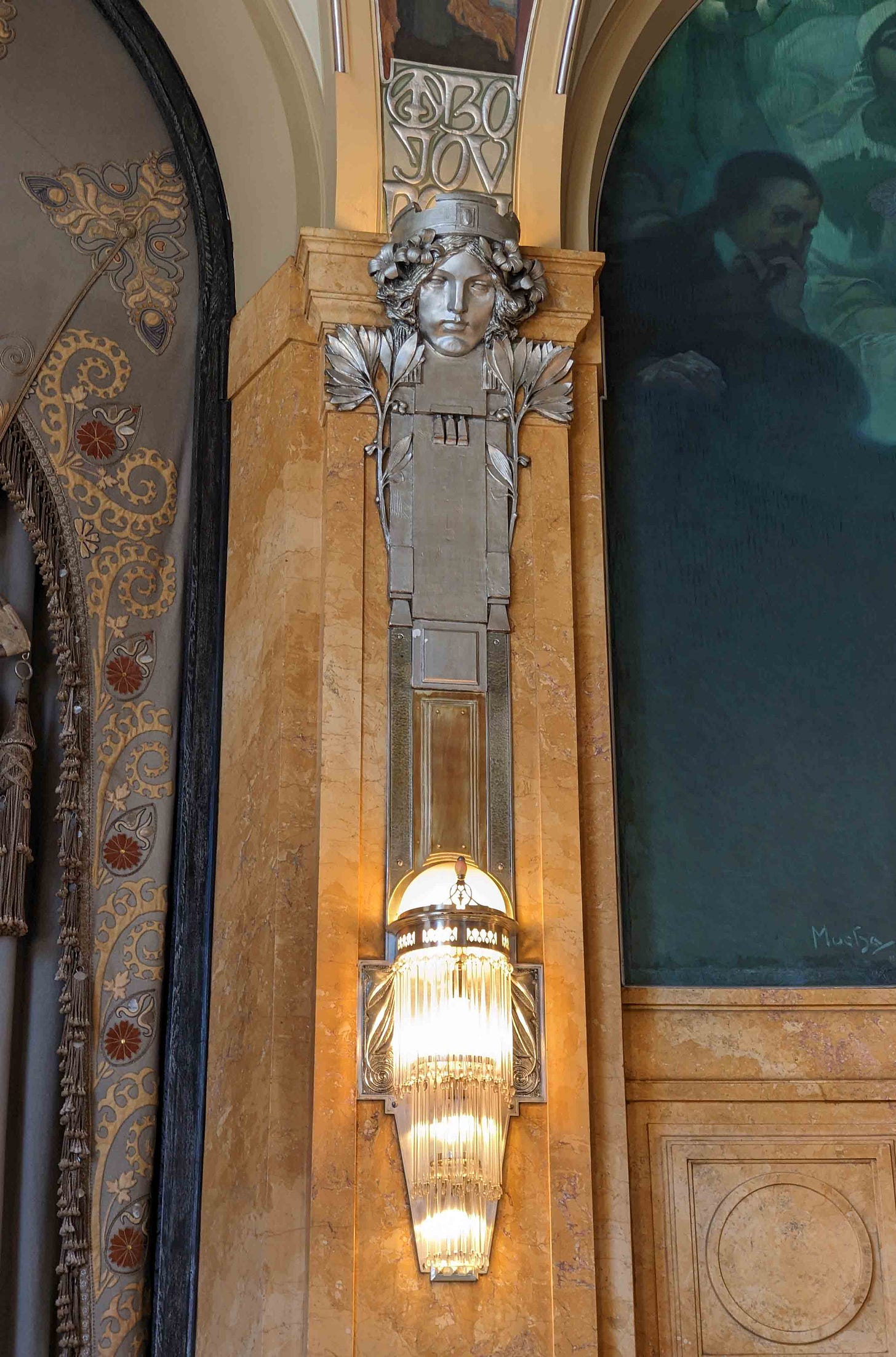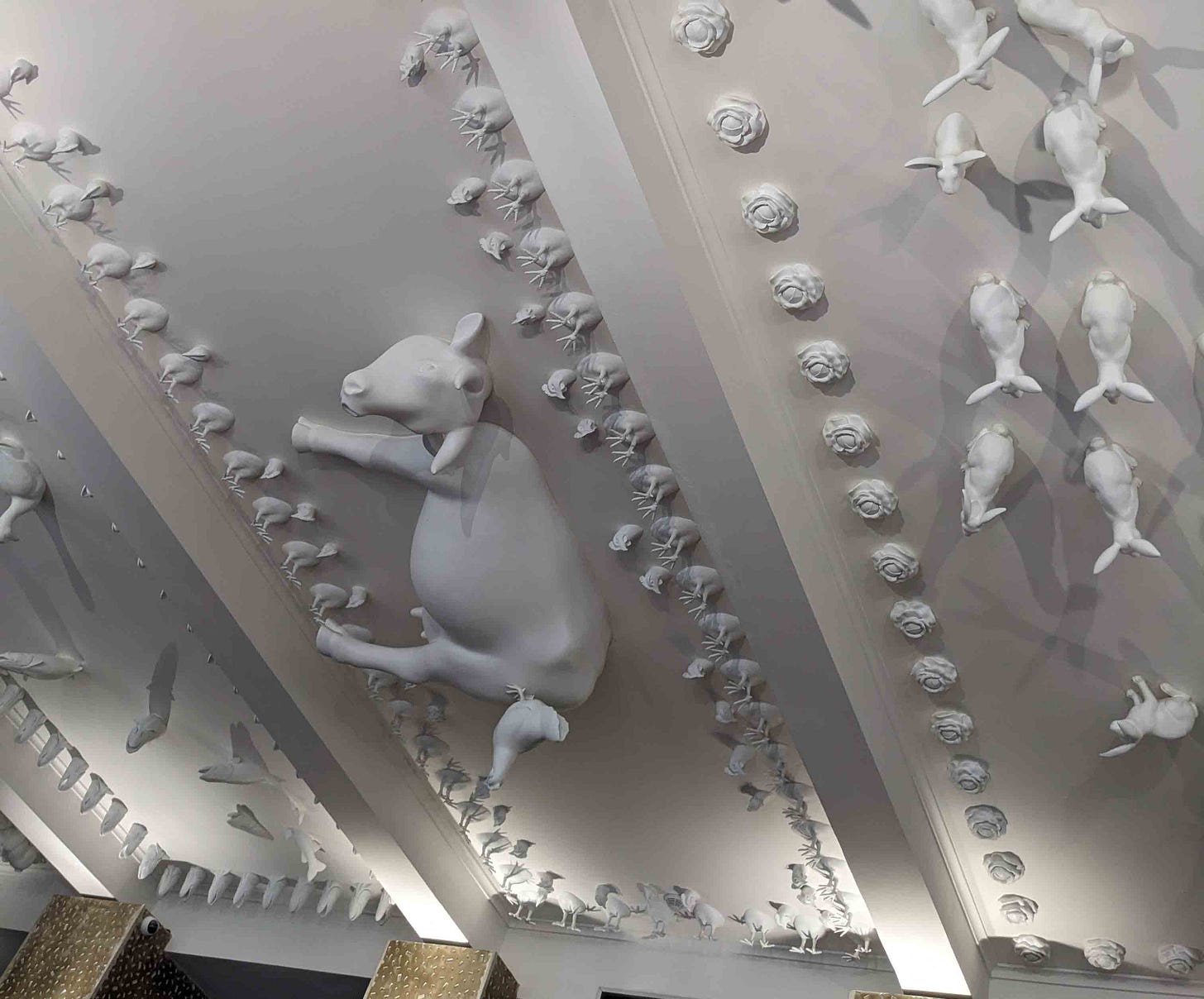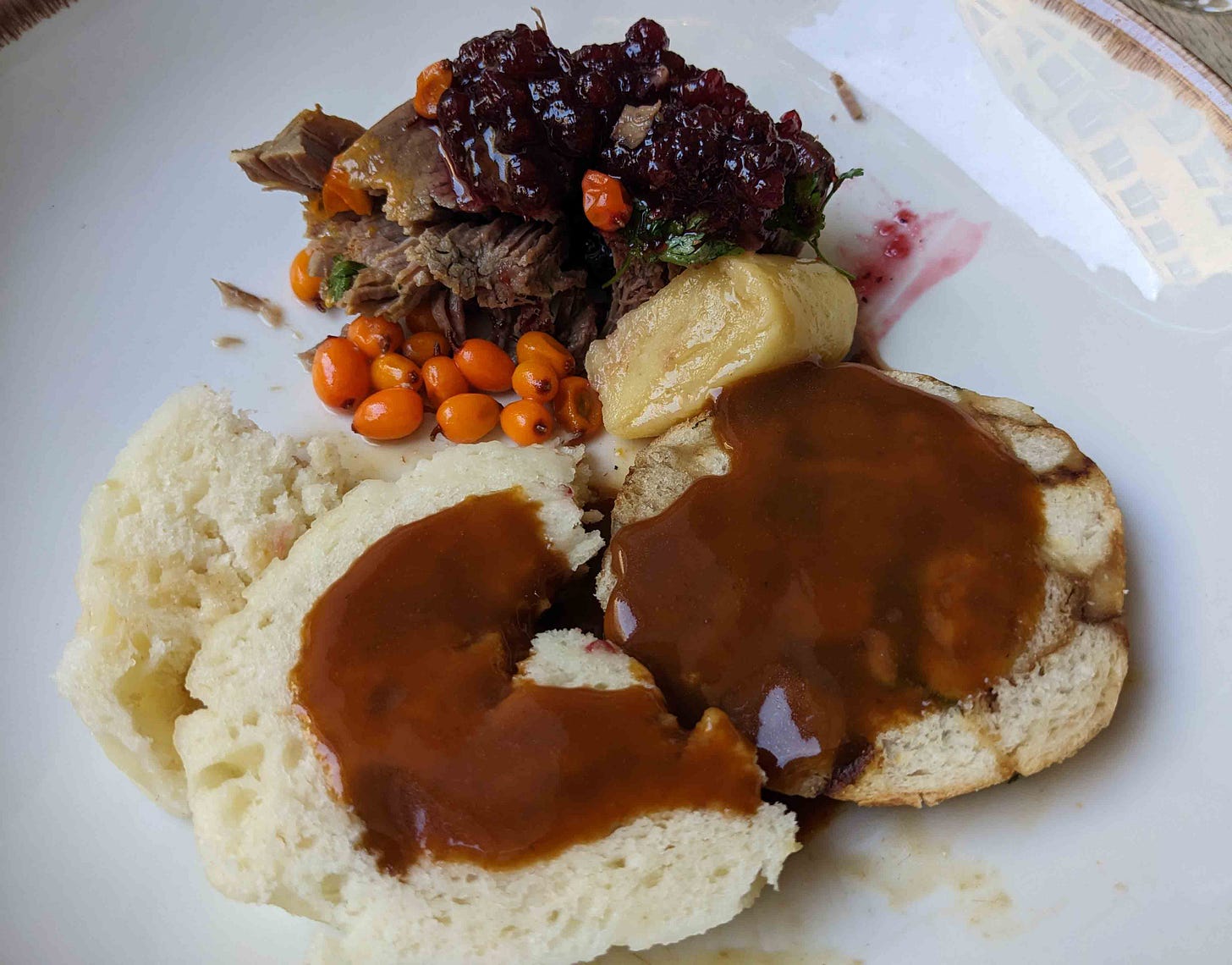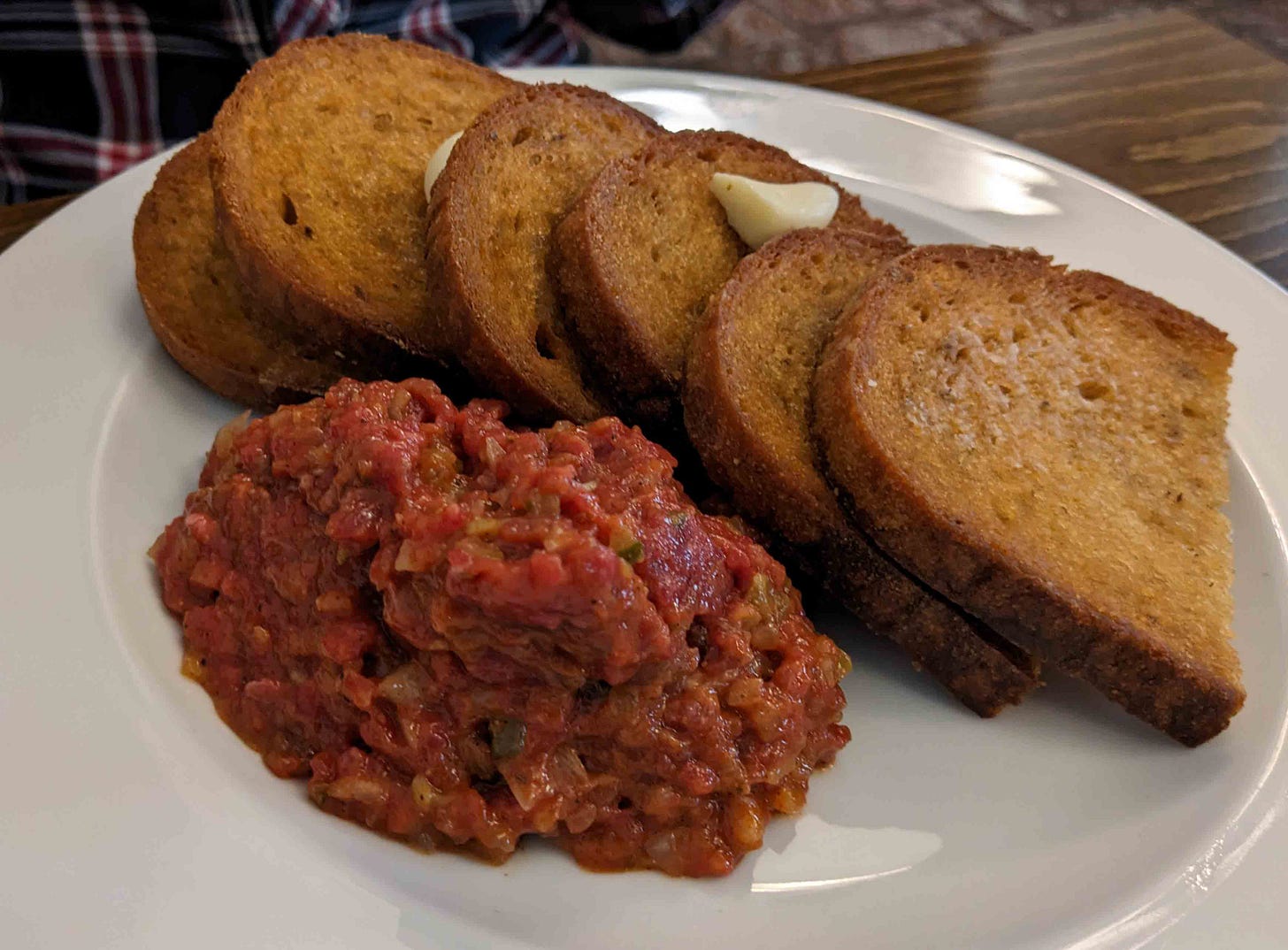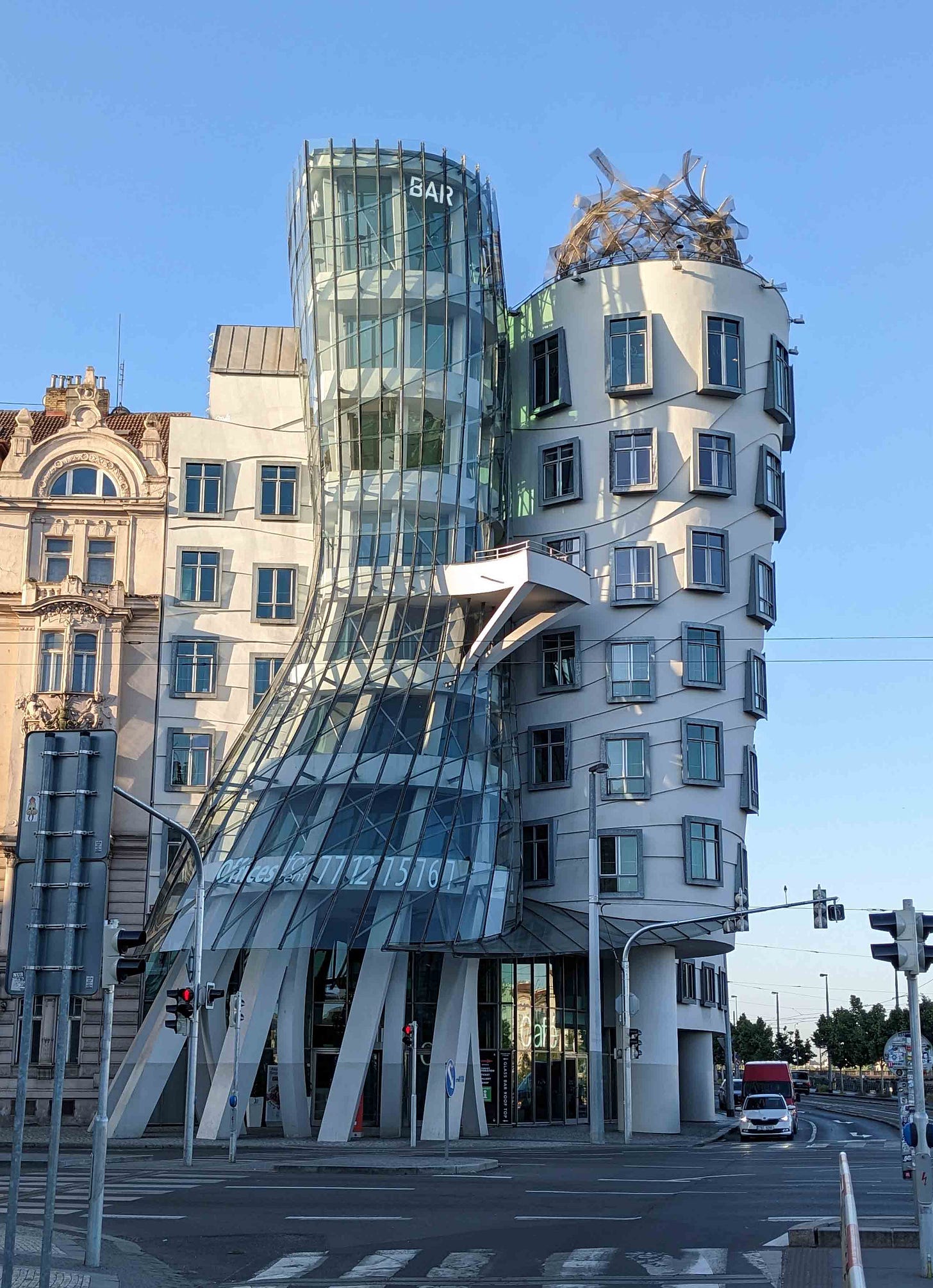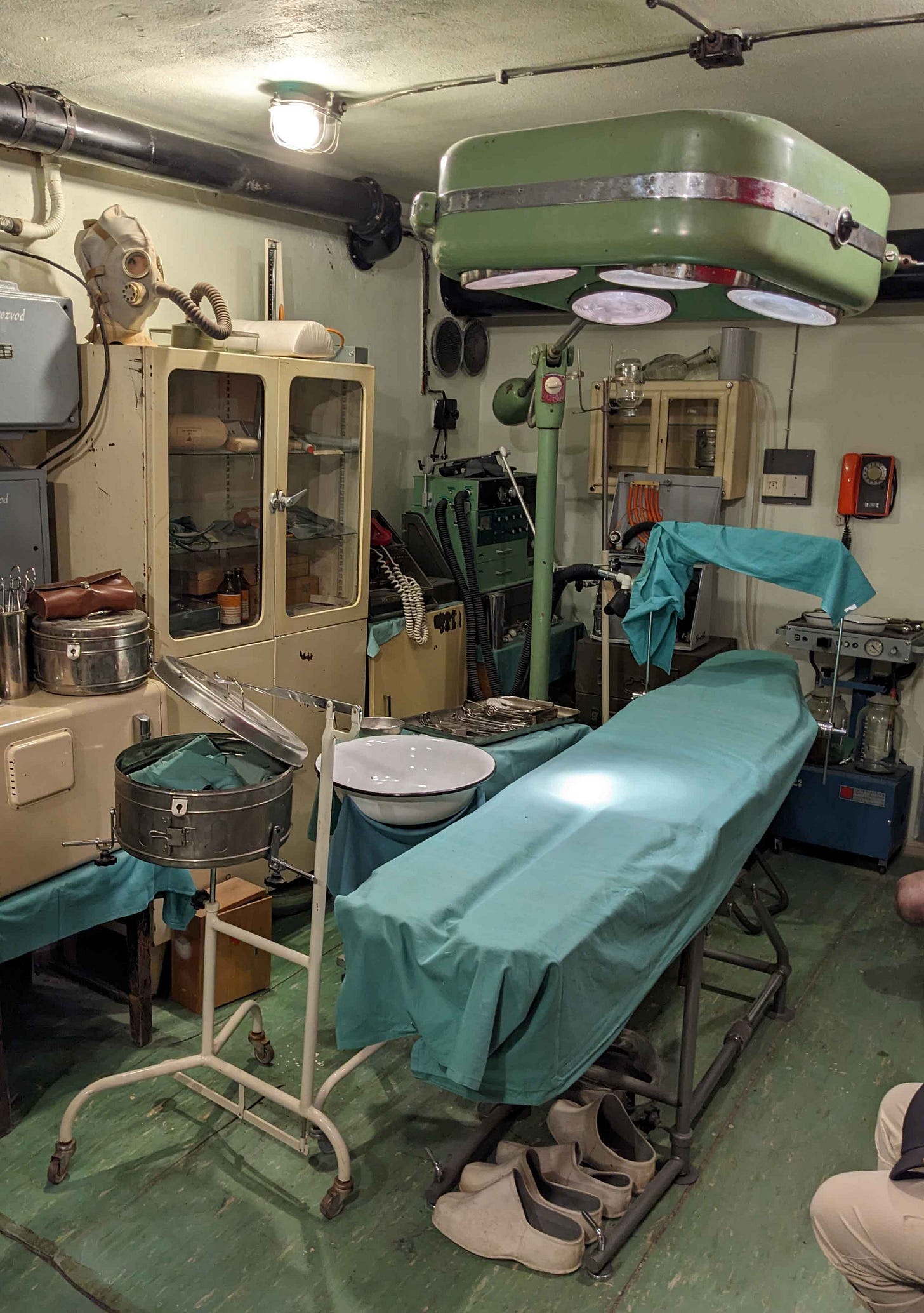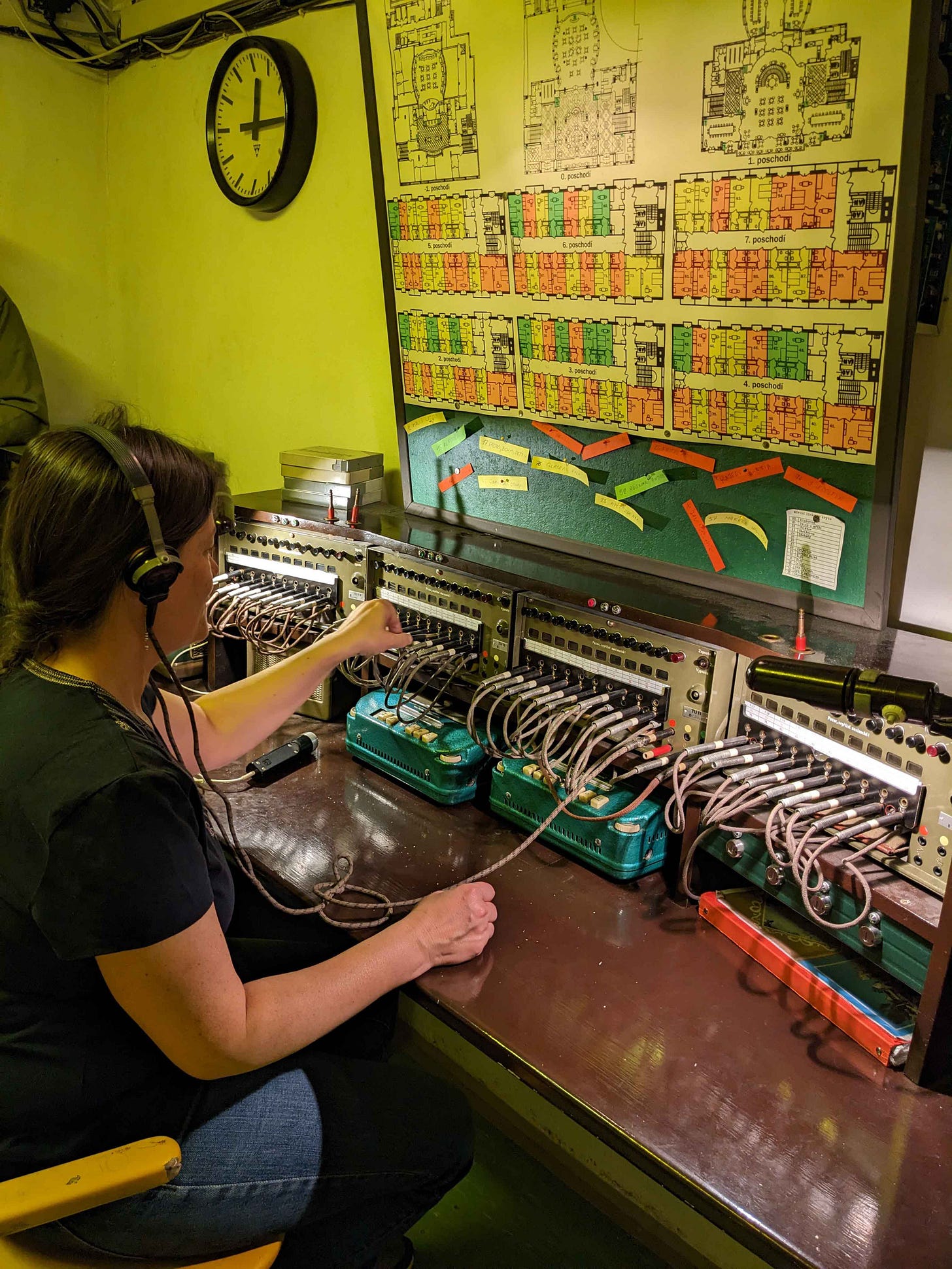I’ve been wanting to visit Prague for a long time, at least ten years. When Christian and I first started dating, we talked about taking a trip there together, a visit that was delayed several years by Covid.
We did all of the touristy stuff: walked through the Old Town, toured the castle, visited the synagogues and the Jewish cemetery, and crossed the Charles Bridge. It was hot and crowded in the summer and less romantic than in my imagination.
The Municipal House tour was definitely a highlight, a must for anyone who is interested in Art Deco.
We have come to an agreement about traveling: Christian is more in charge of the activities for each day, and I am more in charge of the food. I enjoy looking ahead of time for good restaurants and making a mental list of famous local things that I want to try. This time, our AirBnB host was a wonderful resource: she recommended about a dozen places; all four of them that we tried were excellent.
The first day we ate at Parliament in Vinoradsky. I didn’t notice the decorative ceiling until I saw other customers looking up.
We ordered deer with dumplings and gravy, the latter accompaniments to many Czech meals. We didn’t know what to expect having never tried them or even seen them before. Our waitress asked us to choose which dumplings and which sauce we wanted, but very nicely agreed to let us try everything since it was our first time: three different dumplings and two sauces.
The dumplings are spongy, chewy, and clearly designed to be filling. Both gravies were good, but I preferred the darker one that is pictured. The deer was excellent, tender and flavorful, topped with two different berries.
Deer was on the menu at a lot of restaurants in Prague, and it made me wonder why we don’t see it on menus in the US. It’s not like we have a shortage of deer, certainly not in Minnesota. I found out that they are raised for meet in the Czech Republic: there are more than 800 deer farms in a country the size of Louisiana.
The next day we ate at Lokál Dlouhááá. All of the tables were reserved, but since we had skipped lunch and were hungry at 5:30, they let us occupy a table as long as we promised to leave by 7. I ordered what turned out to be the best pickled herring I’ve ever had: it was tender, flavorful, and delicious with the charred lemon dressing.
Christian ordered the steak tartare. We were both surprised to discover that we liked it even better than the French version. It’s a much simpler recipe, just very fresh raw chopped beef, finely chopped onion, dill pickle, egg yolk, and oil. It was served with slices of coarse, toasted bread that you rub with a raw clove of garlic before putting the tartare on top. It was so good that the next day we got takeout from a famous deli that specializes in tartare (Naše Maso) and took it back to the apartment for dinner.
We split up for the first half of our last full day in Prague. Christian visited the church of the Knights Templar and walked around two neighborhoods that we had not yet explored, while I visited the Cold War Museum, located in a bunker several stories below a famous hotel on Wenceslas Square. It was build just after WWII. I didn’t know that Prague was bombed twice by the US Air Force near the end of the war, apparently once by accident (faulty radar led the pilots to believe they were over Dresden) and a second time on purpose. In all about 200 buildings were destroyed with around 1,000 deaths. Many of Prague’s more modern buildings, like this hotel and the famous Dancing House by Frank Gehry, were built on sites where buildings had been bombed.
The Cold War played an outsized role in my childhood, leading to anxious silent goodbyes every evening before bed to my family, my cat, and others I cared about, just in case the nuclear war started while I was sleeping. It’s fascinating and a little bit therapeutic to see the anxiety on the other side: the bunker, the control room with maps of missile sites and border reinforcements, the emergency measures in case of nuclear fallout. The bunker was equipped with a generator that could be operated by hand, definitely in shifts because it was significant work, to take care of air exchange and the pumping of groundwater. There was an emergency surgery room, in case someone needed an operation during confinement.
And even an escape hatch with tunnel:
Since it was never used in wartime, the bunker eventually became a listening post where Communist Party spies bugged the rooms of western visitors and officials from other Eastern bloc countries.
Our tour guide was a 20th century history doctoral student from Prague University, so the tour was very long… More than two and a half hours. There was a lot of fascinating memorabilia: propaganda posters, uniforms and rifles, food ration stamp books and travel papers.
At this point, it sems like I’ve reached the size limit for a post sent by email. I’ll have to continue in a bonus fourth post tomorrow.
Note that the third button below allows you to subscribe for free. I’m new to Substack and can’t find a button that clearly says that…





